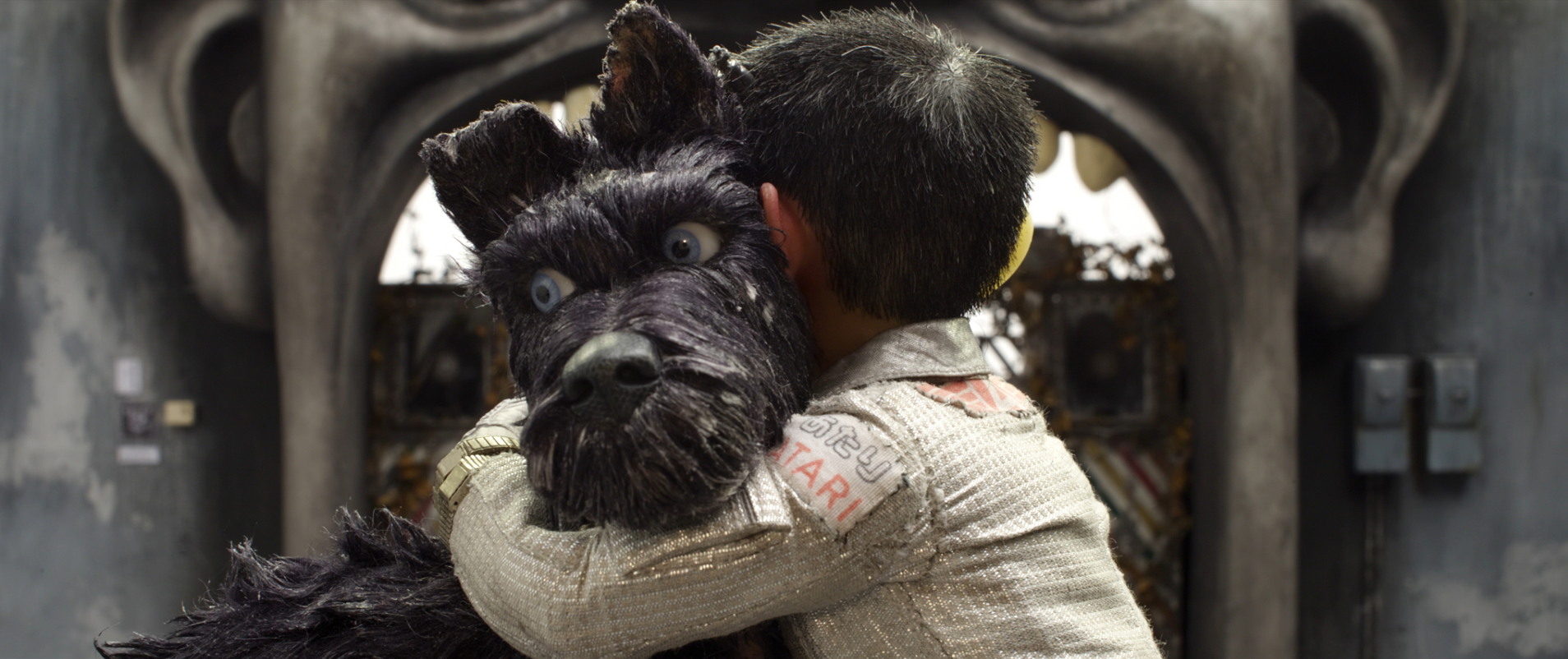
MPAA Rating: PG-13 | Rating: ★★★
Release year: 2018
Genre: Adventure, Animated, Comedy Director: Wes Anderson
I must confess this up front: I am not a dog person. Nor am I a cat person (allergies). But I am a film person. And Wes Anderson’s Isle of Dogs is a meticulously detailed visual feast of a film. His second stop-motion animation film following Fantastic Mr. Fox (2009), Anderson’s diorama/dollhouse aesthetic of symmetry and deadpan shines through in this mythological story about a boy and his dog(s). Despite Anderson’s signature attention to mise en scene, I found Isle of Dogs to be remarkably unaffecting, despite the grimy dystopian setting and the plethora of doggy tears. I also have an unanswered question which is likely related to my underwhelmed reaction: why Japan? Why the cultural appropriation, Mr. Anderson? Could this film have been set somewhere else, or at least crafted in a way which honors Japanese culture rather than uses it?
This isn’t to say that I find Japanese aspects unaffecting; it’s to say that the cultural appropriation was a distraction for me throughout the narrative, right from the opening exposition: a dog flu has spread in the near-future metropolis of Megasaki City, where cat-loving mayor Kobayashi banishes all dogs to nearby Trash Island, a sprawling wasteland of garbage. The first dog to be exiled is Spots, (Liev Schreiber) the bodyguard and pet of 12-year-old Atari Kobayashi (Koyu Rankin), who is the orphaned nephew and ward of the mayor. Six months later, Atari flies a stolen plane to Trash Island in search of Spots. He is rescued by five dogs, an “alpha pack” of Andersonian regulars wandering the wastes: Rex (Edward Norton), King (Bob Balaban), Duke (Jeff Goldblum), Boss (Bill Murray), and their leader, and one of the many protagonists, Chief (Bryan Cranston). While the dogs help Atari look for Spots, Professor Watanabe (Akira Ito) discovers the cure for the dog flu, but is mysteriously poisoned, prompting spunky American exchange student Tracy (Greta Gerwig) to investigate the conspiracy.
Throughout all the adventure, there are overt nods and references to Japanese culture: Hokusai’s The Great Wave off Kanagawa, Akira Kurosawa films, cherry blossoms, pagodas, etc. When Japanese characters speak, there are rarely subtitles, although much is translated for us by an American translator voiced by Frances McDormand, and the dogs’ barks are all in clear American-accented English. It creates a clear disconnect between the Japanese and English-speaking audiences, holding the Japanese characters at a distance. Most moments focused on the Japanese make them into a punchline (sumo wrestling is funny! so are Japanese accents!) and their characters are clearly secondary to the Western-voiced dogs and humans. That Tracy becomes somewhat of a hero and love interest for Akira feels strange too, as her earnest outsider status is celebrated more than chided or mocked. This all felt more like cultural sprinklings or allure than true appreciation and understanding of Japanese heritage. It’s akin to someone getting a tattoo of Japanese characters on their forearm in college because “it looks rad.” In truth, this is not something really new for Mr. Anderson (e.g. The Darjeeling Limited and India; The Grand Budapest Hotel and eastern Europe). Despite its cultural hijacking, much of Isle of Dogs does indeed look rad. In all this, Isle of Dogs is the second-best film written by a Coppola (Roman) set in Japan featuring Bill Murray and Scarlett Johansson, the first being Lost in Translation.
All this to say, Isle of Dogs is enjoyable for its rich attention to detail in every shot and its on-the-nose doggy comedy. One can appreciate the ruffling of fur, the individual bits of trash, and the visual humor of dogs fighting in what looks like a giant cloud of cotton balls. Still, much of the narrative feels like such a cotton ball fight, with so many characters tossed about as to become unwieldy. Whose story is this anyway: Spots? Chief? Akira? Tracy? Kobayashi? Megasaki City? All of the above? That the alpha pack essentially disappears in the third act is noticeable, and other supporting canines–especially the love interest of Nutmeg (Scarlett Johansson), the prophetic Jupiter (F. Murray Abraham) and his TV-watching sidekick Oracle (Tilda Swinton)–are given proverbial scraps, mainly because the story itself can’t really contain all of these characters. Anderson’s previous films have enormous casts of quirky characters, but this is the first of his films where I couldn’t honestly discern the actor from the character–that’s a dog voiced by Jeff Goldblum, not Duke (it’s telling that I just had to look up the character’s name again to even write this sentence). But maybe it’s just me. Like I said, I’m not a dog person, though I did watch this with a dog in the audience: a couple brought their retriever into the cinema, and he seemed to enjoy the film as a treat. Woof.
IMDB Listing: http://www.imdb.com/title/tt5104604/
Leave a Reply